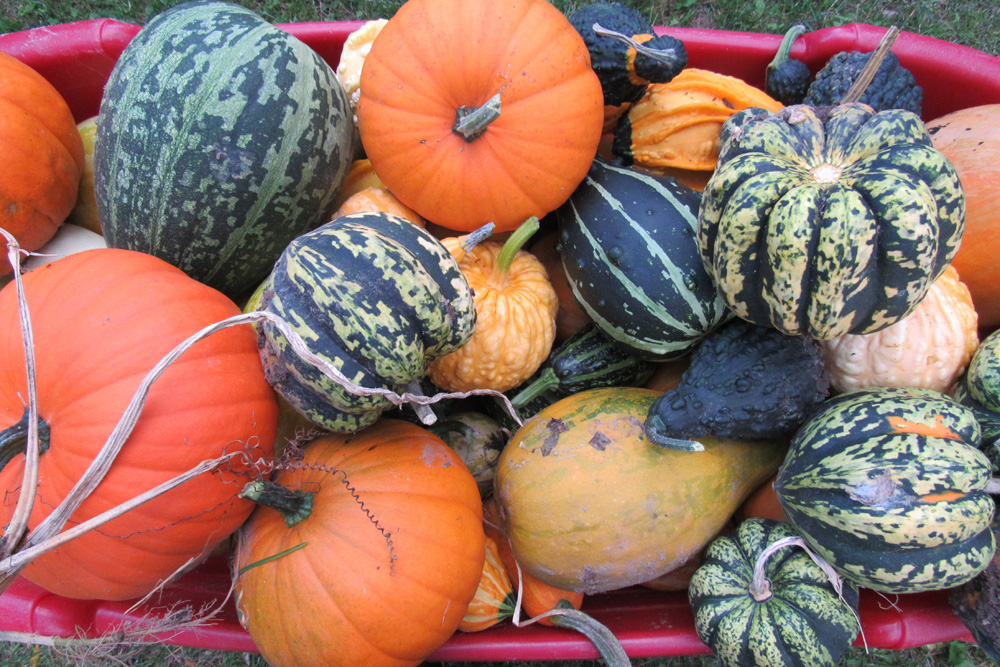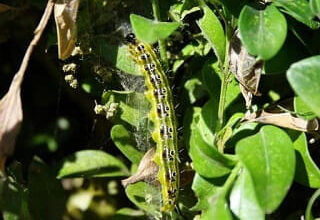Challenges of growing squash

Winter squash and pumpkins are popular vining crops in home gardens. Growing a healthy crop, however, can be a challenge.
Winter squash as well as zucchini, melons, gourds, cucumbers and summer squash are all members of the cucurbit family. Here are some tips from the University of Minnesota Extension for growing squash crops.
Vine crops need one inch of water each week, either from rain or watering. Soak the soil thoroughly when watering. If you trellis your squash, you may need to water more frequently. Weed frequently with a hoe or hand tool to stop weeds before they get out of control. Use shallow cultivation away from the plants so as not to disturb roots which are near the surface of the soil. Keep your squash patch cultivated until the vines fill in the space, then pull larger weeds by hand. If you use a mulch, straw, or compost to help in weed control, make sure the soil temperature has reached 75 degrees F before you put it in place, as mulch can slow-down soil warming.
Pollination is vital for a good harvest, and poor pollination can have several causes. Cold, cloudy or rainy weather may decrease pollination as can high day and nighttime temperatures. The University of Maryland Extension says unusually high daytime and nighttime temperatures can cause plants to drop flowers and small fruits and produce deformed and under-sized fruits. All fruiting plants have temperatures that work best for them for pollination. UMD Extension explains that high temperatures can reduce pollen production, prevent anthers from releasing pollen, kill pollen and interfere with the pollen tubes that serve as conduits for the fertilization process. Flowers can be injured by high temperatures before they open. It also appears that high night temperatures – temperatures above 75 degree F – appear to be most responsible for pollination problems.
Good care of your squash plants can help with these issues. Cucurbits need lots of space, water and fertile soil. Squash need sun, but if heat is an issue, you may want to plant them in a spot that receives some afternoon shade or try shade cloth material to reduce heat stress. Planting a variety of flowering plants around your vegetable garden can help attract pollinators. Reduce or eliminate the use of insecticides, particularly when plants are in bloom.
Additionally, squash crops face a number of pest and disease issues. The University of Minnesota Extension says striped cucumber beetles eat leaves, flowers, stems and fruit. Spotted cucumber beetles also feed on all above-ground parts of the plant. Squash vine borers burrow into the crown and vines of plants – causing the entire plant to suddenly wilt. Squash bugs leave a ragged appearance to leaves upon which they have fed. Diseases include powdery mildew, a fungal disease that causes powdery white spots on leaves and vines. Cucurbit viruses can cause new growth to be off-color, twisted or distorted. Anthracnose causes large tan spots on leaves and angular leaf spot causes small blocky spots on leaves surrounded by a yellow halo.
Good gardening practices described above can help plants deal with pests and disease. Good air circulation is especially important for cucurbits. Hand-picking is an option for squash bugs and other pests. I try to squish vine borer moths when I see them, for example. Row covers are also an option, but remember covers will have to be removed when plants are in bloom. There are various traps available for problem insects, and if you use chemical control, follow label directions and stop using insecticides before the plants begin to bloom. Regarding disease prevention, Cornell University has an extensive list of disease and disorder resistant squash varieties. Search for disease-resistant cucurbit varieties on the http://vegetables.cornell.edu website.






